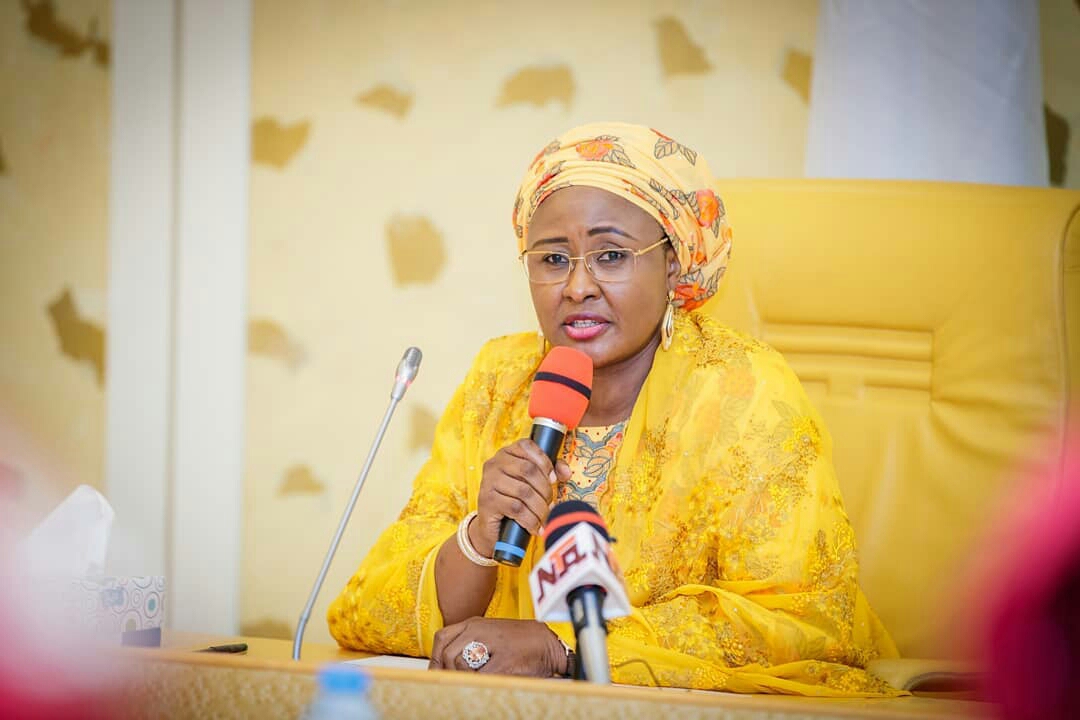Buhari’s support for NYSC driven by belief in one Nigeria – Aisha
First Lady Aisha Buhari Tuesday said President Muhammadu Buhari’s administration will be remembered for placing a premium on youth development. She spoke Tuesday in Abuja when she flagged off medical outreaches under the NYSC Health Initiative For Rural Dwellers (HIRD) held in commemoration of the 50th anniversary of the scheme. She said the president was […]

First Lady Aisha Buhari Tuesday said President Muhammadu Buhari’s administration will be remembered for placing a premium on youth development.
She spoke Tuesday in Abuja when she flagged off medical outreaches under the NYSC Health Initiative For Rural Dwellers (HIRD) held in commemoration of the 50th anniversary of the scheme.
She said the president was particularly passionate about the National Youth Service Corps, and that his support for the NYSC was driven by his belief in one Nigeria and sincere appreciation of the contributions of corps members.
“To this effect, the first family always treats corps members serving in Daura, Katsina State, to presidential reception during Sallah festivities,” she said.
- NIGERIA DAILY: Why National Assembly Leadership Tussle May Affect Nigerians
- Senators, reps will choose leaders on D-Day – Adamu
She urged the NYSC management and corps Members not to relent in promoting the unity of Nigeria by providing quality service delivery to the nation.
She described the introduction of the HIRD project as successful, hence her office appreciated it by donating “a well-equipped mobile clinic to the scheme is to enhance the success of the corps medical team.”
She said the NYSC had made enormous impact, especially among rural dwellers.
NYSC Director-General, Brigadier-General Yushau Dogara Ahmed, said the HIRD programme was born out of the need to solve health challenges affecting poor people in the rural areas across Nigeria.
He said over three million Nigerians had so far benefitted from the initiative.
Later at a media parley, Ahmed said the NYSC was faced with paucity of funds and inadequate facilities at many orientation camps.
He said at the inception of the scheme in 1973, the number of corps members was 2,364; while over 300,000 were now being mobilized annually.
He said some states were still operating temporary orientation camps that could hardly accommodate 2,000 corps members.
